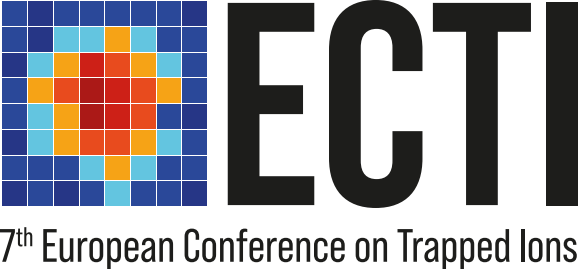Sprecher
Beschreibung
Trapped-ion quantum sensors have become highly sensitive tools for the search of physics beyond the Standard Model. We present our recent measurements on the test of local Lorentz -invariance (LLI) with a single Yb+ ion [1] and isotope shift measurements for the search of the fifth force mediated by a potential dark matter boson [2,3].
In the attempt to unify all fundamental forces at the Planck scale, it is suggested that spontaneous breaking of Lorentz symmetry would occur. In the framework of Standard Model Extension [4], such violation would lead to energy shifts of atomic states with non-spherical electron orbitals. With high-precision spectroscopy of such states in a Michelson-Morley type experiment, we search for violation of LLI. With this method, we constrained the symmetry breaking coefficients at the 10-21 level. These results represent the most stringent test of this type of violation in the combined electron-photon sector.
Astronomical observations [6,7] hint towards the existence of dark matter. However, the origin and composition of it are still unknown. Theoretical proposals suggest a dark matter boson coupling the neutrons and electrons in an atom, mediating the fifth force. This coupling would lead to an additional Yukawa-like potential, giving a small shift in energy levels. To distinguish this shift from the less accurately calculated nuclear effects (eg. field shift and mass shift), isotope shift measurements and King plot analysis have been used. We follow the same analysis as in Ref. [8], and with the improved accuracy by factors of 10 to 100 for the measured transitions, we hope to shine light into the observed nonlinearity of the King plot in ytterbium.
[1] L. S. Dreissen et al., Nat. Commun. 13, 1-6 (2022).
[2] C. Delaunay et al., Phys.Rev. D 96, 093001 (2017).
[3] J. C. Berengut et al., Phys. Rev. Lett. 120, 091801 (2018).
[4] M. A. Hohensee et al., Phys. Rev. Lett. 111, 050401 (2013).
[5] G. T. Genov et al., Phys. Rev. Lett. 118, 133202 (2017).
[6] V. C. Rubin et al., Astrophys. J 238, 471 (1980).
[7] R. Massey et al., Rep. Prog. Phys. 73, 086901 (2006).
[8] J. Hur et al., Phys. Rev. Lett. 128, 163201 (2022.)

